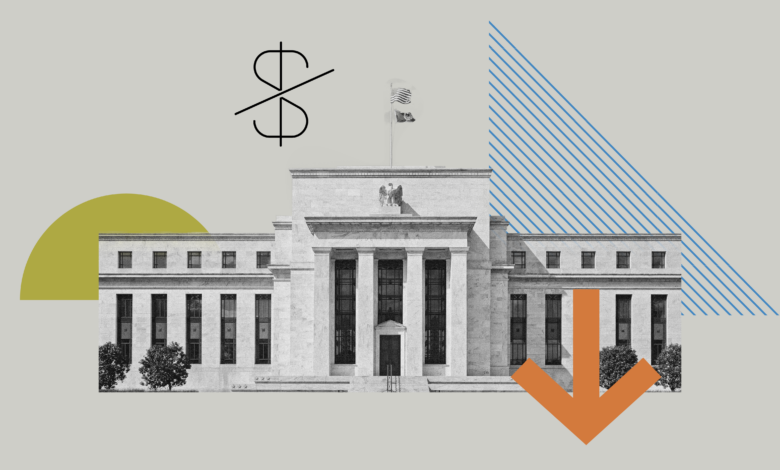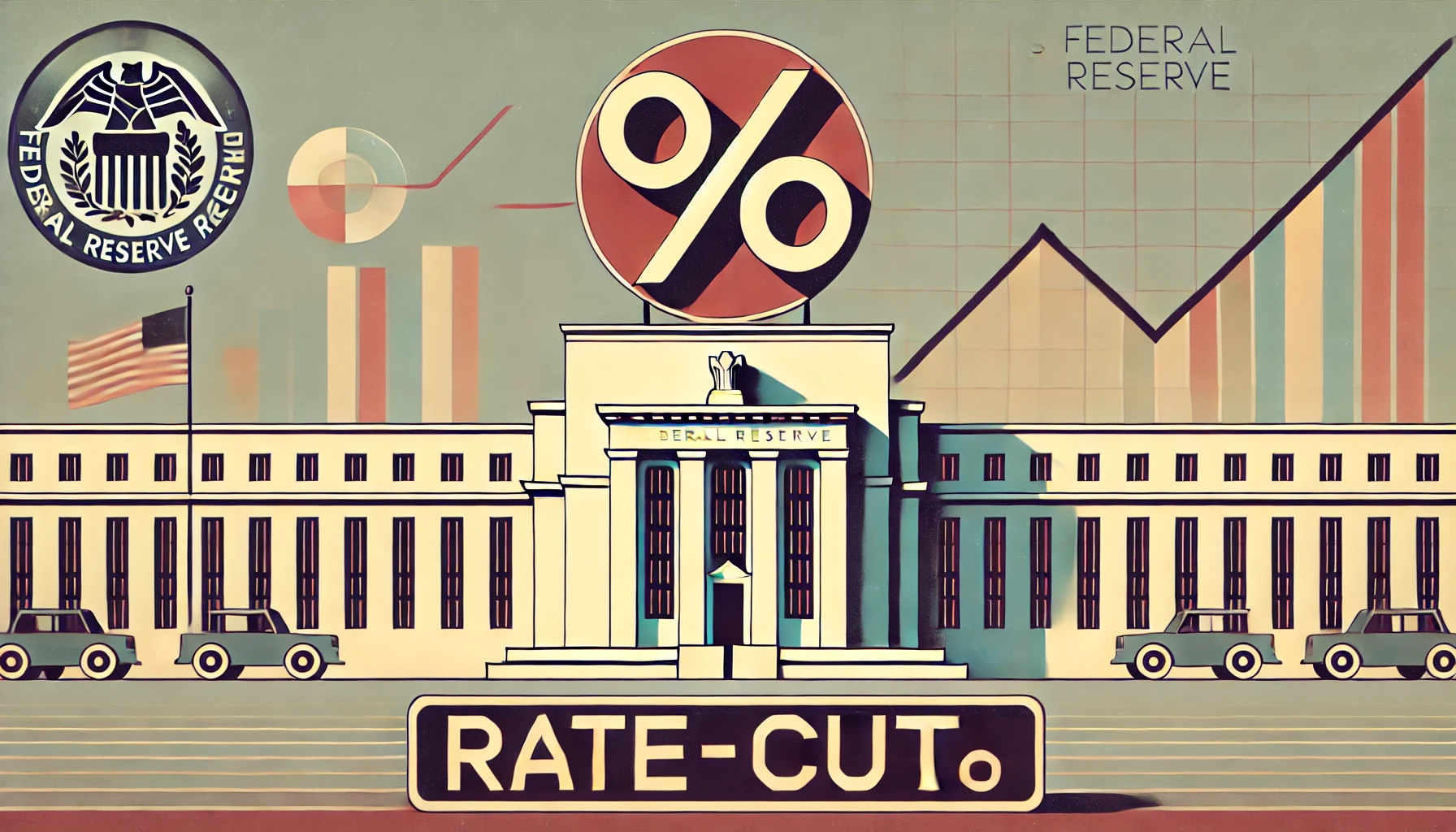India Markets Jump 1000 Points Yet Global Investors Bracing For Turmoil Due To Fed Cuts; What’s The Confusion?
Global markets are witnessing heightened uncertainty as investors make sense of the implications of a substantial U.S. interest rate cut. While this has sparked confusion about the future of the world's largest economy, India's stock markets are telling a different story. With the Sensex and Nifty hitting record highs, domestic investors are reaping the rewards, even as global volatility looms. Here's a look at how these developments are shaping markets both at home and abroad.

Global investors are bracing for significant market volatility following a large U.S. interest rate cut, which has caused uncertainty about the direction of the American economy.
The debate is whether the economy is poised for a boom or facing the risk of a recession, leading to mixed signals for stocks, bonds, and currencies globally.
However, in India, the picture is quite different.
The Sensex surged by 1,000 points, and the Nifty crossed the 25,700 mark, making domestic investors significantly wealthier, with a Rs 4 lakh crore increase in market capitalization to a total of Rs 469.5 lakh crore for all BSE-listed companies.
Global Markets
In the U.S., the Dow crossed 42,000 for the first time, and both the Dow and the S&P 500 closed at record highs.
Asian markets, including Japan’s Nikkei, saw gains following the U.S. rate cut. Japan’s Nikkei rose 2% after the Bank of Japan kept interest rates unchanged and gave a positive outlook on consumer spending.
Meanwhile, Brent crude oil futures slipped slightly by 0.3% to $74.69 a barrel but still showed a weekly increase of 4.2%.
The Indian rupee also strengthened for the third consecutive session, rising 9 paise to 83.56 against the U.S. dollar, supported by strong domestic markets and a weaker dollar.
Indian Stocks
The broader Indian market saw participation from smaller stocks, with the small-cap index rising by 0.5%.
Among blue-chip companies, JSW Steel gained over 3%, while Hindalco and Tata Steel also rose by 2%. This rally in metal stocks followed a positive note from global brokerage Macquarie, which highlighted strong domestic fundamentals and lower input costs.
Macquarie upgraded JSW Steel’s rating and increased target prices for Coal India, Tata Steel, and Jindal Steel and Power.
Shares of IIFL Finance surged by 12% after the Reserve Bank of India lifted restrictions on its gold loan business. On the other hand, Vodafone Idea’s stock continued to decline, dropping 3%.
Meanwhile, IT stocks remained weak, declining for the third consecutive day.
Expert Take
Analysts expect the Nifty to trade in the 25,000-26,000 range, with resistance around 25,500.
“Given the current market momentum, Nifty looks set for further gains. Key stock picks include Titan, with a target price of ₹3,951, along with Oberoi Realty and Naukri, which show potential on intraday dips,” said Prashanth Tapse of Mehta Equities.
This week, Bank Nifty has outperformed, rising by 2%, compared to Nifty’s modest 0.2% gain. However, concerns over high valuations in the broader market are also being noted. “This trend is likely to persist,” said Dr. V K Vijayakumar of Geojit Financial Services.
![Parliament Clears Bill For RBI Supervision Of Cooperative Banks [Read Bill]](https://www.livelaw.in/h-upload/2020/06/16/750x450_376579-rbi.jpg)
Will the RBI Follow?
The U.S. Federal Reserve’s move to lower interest rates could set the stage for other central banks, including the Reserve Bank of India (RBI), to begin reducing rates by the end of 2024.
With valuations becoming attractive after sustained sell-offs by foreign investors, bank stocks are emerging as a strong bet in this evolving macroeconomic environment.
While falling interest rates may pressure bank margins and make it harder to attract deposits, they also boost credit demand and improve asset quality, as borrowers with floating-rate loans find repayments more affordable.
When interest rates decline, loans are typically repriced downward faster than deposits, squeezing net interest margins initially. However, as deposits adjust over time, margins tend to recover.
“Once deposit rates reprice, margins start to improve because loans are linked to external benchmarks, which adjust faster. This dynamic depends on the asset-liability management (ALM) and deposit maturity profiles,” explained Shibani Sircar Kurian of Kotak Mahindra Mutual Fund.
Banks and NBFCs (Non-Banking Financial Companies) that rely on wholesale funding benefit more from rate cuts, as their borrowing costs drop faster compared to retail-funded banks with longer-term liabilities.
“NBFCs, especially those with fixed-rate assets like auto financiers, see margin expansion during rate cuts, as their borrowing costs decrease,” Kurian noted.
NBFCs such as SBI Cards, Shriram Housing Finance, and Mahindra & Mahindra Financial Services, with fully fixed loan books, are expected to be shielded from near-term repricing.
In contrast, companies like LIC Housing Finance, with 99% of its loans on floating rates, could face challenges as rates are adjusted, according to Nomura.
At the consolidated level, Bajaj Finance might face some negative effects from rate cuts on its yields due to the higher proportion of mortgage loans in its portfolio. However, on a standalone basis, it would be better protected, as most of its loan book is fixed-rate.
Lenders focused on consumer credit are likely to benefit from rate cuts since cheaper loans make credit more accessible to borrowers.
S Naren, Executive Director and CIO of ICICI Prudential AMC, highlighted that “rate cuts could lead to significant treasury gains on the investment books of banks. At present, banks are among the cheapest sectors relative to historical valuation, so rate cuts would have a positive impact, helping both banks and NBFCs by reducing their borrowing costs.”
Naren also noted that when banks shift their focus toward attracting deposits, there may be less pressure to compete aggressively on lending rates.
This could result in better margins, as banks prioritize deposits over reducing credit rates. With falling interest rates, the pressure to offer higher deposit rates may ease, potentially improving net interest margins.
Bank stocks have faced challenges due to slower loan growth, fierce competition for deposits, and concerns about profitability and regulatory guidelines for liquidity coverage ratios. However, much of this negative sentiment is already factored into current prices.
Over the past three years, Kotak Mahindra Bank has delivered a negative return of 6.5%, while HDFC Bank has underperformed with a gain of just 9.5%.
“Within equities, the banking and financial services sectors offer clear value,” Naren added. “These sectors currently have one of the highest weightings in our fund’s history. However, these are not low-risk sectors, so we regularly reassess our positions.”

A Different Story Globally
Meanwhile, global investors are on edge after a large U.S. rate cut sparked uncertainty about whether the U.S. economy is heading for a boom or recession, creating confusion around the outlook for global stocks, bonds, and currencies.
On Thursday, global stocks hit record highs following the U.S. Federal Reserve’s decision to lower interest rates by 50 basis points.
Currencies such as the euro, pound sterling, and those of countries like Norway and Australia also strengthened against the dollar. U.S. stocks saw a surge after initially reacting cautiously to the Fed’s move.
However, the Bank of England opted to keep interest rates steady, citing ongoing uncertainty over inflation and global demand.
Some investors warned that the Fed might be providing too much stimulus to an already strong U.S. economy, potentially fueling global growth and raising the prices of commodities and consumer goods.
Trevor Greetham, head of multi-asset at Royal London, remarked, “I think it’s more likely the Fed cuts too much and the economy accelerates.” He added that he expects more market volatility going forward.
Legal & General’s head of economics, Tim Drayson, echoed these concerns, noting that the U.S. economy may be slowing down and that “more turbulence” is likely.
Divergence in Global Markets?
Traders predict the U.S. Federal Reserve will lower interest rates by 72 basis points this year, with a total drop of 195 basis points by October 2025.
However, expectations for a UK rate cut in November have shifted from near certainty to about 80%, and it seems unlikely that the European Central Bank (ECB) will cut rates next month.
These predictions are viewed as unstable by investors, given the differences in economic conditions between Europe and the U.S.
European policymakers are facing slower growth and more persistent inflation than the U.S., making their future decisions less predictable.
Shamil Gohil, a portfolio manager at Fidelity International, suggested that if U.S. and UK economic growth continues to weaken, the Bank of England (BoE) might cut rates more aggressively, which could boost British government bonds (gilts).
However, he warned that if expectations of further U.S. rate cuts were incorrect, it could lead to a global market selloff, adding that he expected increased volatility in global markets. His portfolio remains defensive, favoring investment-grade corporate bonds.
Neil Mehta of BlueBay Asset Management warned that the Fed’s rate cuts are coming at a time when the U.S. economy is still “very hot,” with 3% GDP growth and inflation above target.
)
Meanwhile, core inflation in the Eurozone is just under 3%, and policymakers are divided on future rate cuts after recent reductions in June and September. If the Fed continues cutting, a stronger euro could hurt the Eurozone’s exports, putting pressure on the ECB.
Marcus Jennings, a fixed-income strategist at Schroders, pointed out that a dovish Fed and a weak Eurozone economy make German Bunds more appealing. However, many investors are cautious, warning that central bank policies could shift if U.S. economic data changes significantly.
Dario Perkins, head of macro at TS Lombard, noted that if U.S. employment contracts, the Fed might become more aggressive with rate cuts. Conversely, a rebound in employment could indicate that monetary policy isn’t as tight as feared.
Despite recent market turbulence, the VIX volatility index has dipped to 16.6, much lower than its spike to nearly 66 in early August following a weak U.S. jobs report. The MSCI world share index has also rebounded, gaining over 10% since that market shakeout.
Sheldon MacDonald, chief investment officer at Marlborough, mentioned that while stock valuations suggest the U.S. economy will benefit from rate cuts, government bond prices point to a possible recession. This contradiction could drive more market volatility.
Ben Gutteridge of Invesco commented that if the Fed successfully avoids a recession, trades based on central bank divergence, like betting on a stronger British pound against the U.S. dollar, could thrive.
However, if the U.S. economy weakens, stocks would suffer, and bonds would rally, narrowing regional market differences. “If you don’t want to lose money, you’ve got to get the Fed right,” he emphasized.

Trump Criticizes Fed’s Rate Cut
Republican presidential candidate Donald Trump called the Federal Reserve’s recent rate cut of half a percentage point a “political move.”
In an interview with Newsmax, Trump said most people expected a smaller cut, which he believed would have been the right decision. The Fed’s move marks the start of what is expected to be a series of rate cuts aimed at stimulating the economy.
Trump, who has previously stated that U.S. presidents should have more influence over Federal Reserve decisions, reiterated his stance.
While the Fed chair and the board of governors are appointed by the president and confirmed by the Senate, the Federal Reserve operates with significant independence in setting economic policy that impacts both the U.S. and global markets.





